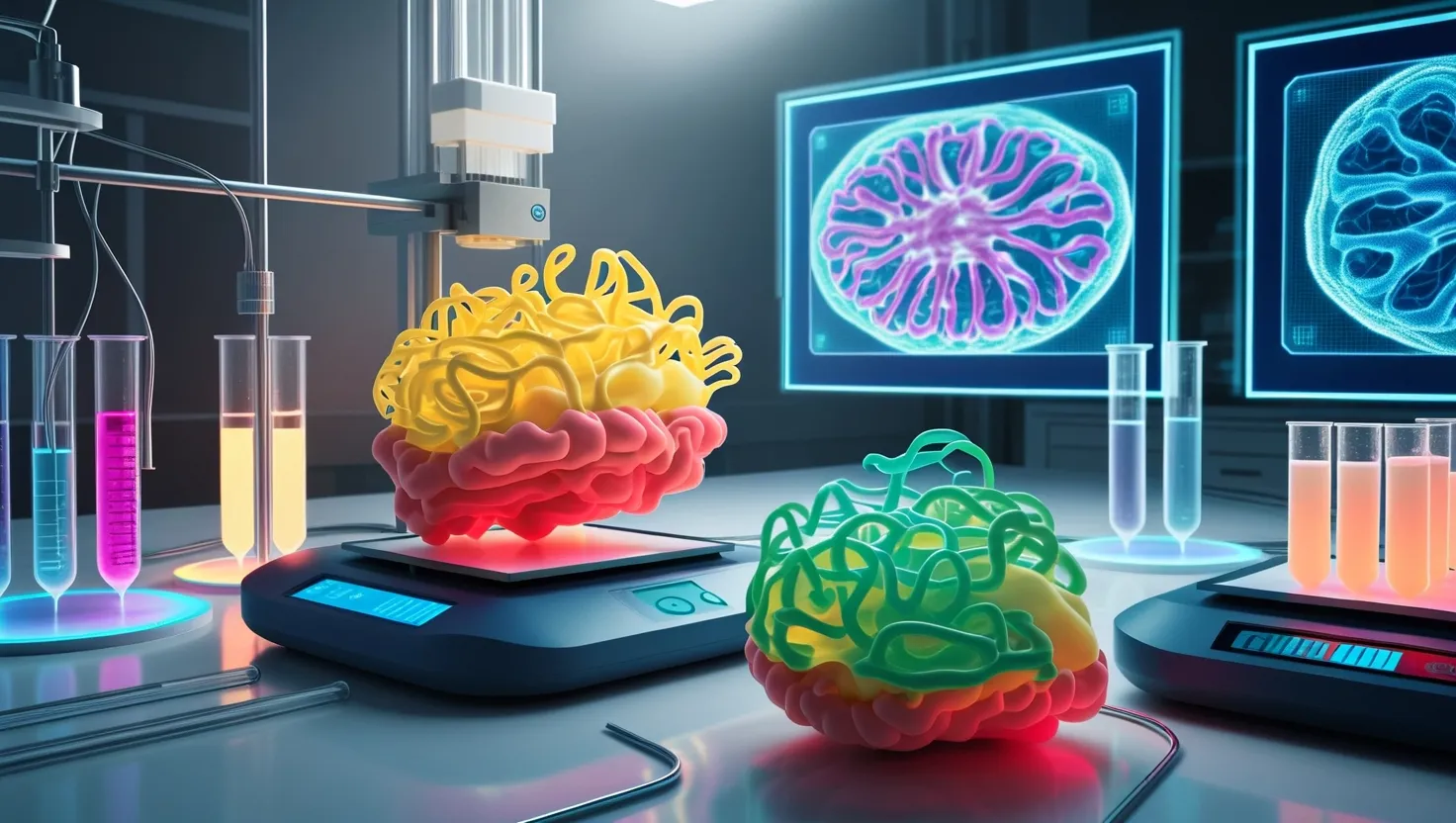As I delve into the fascinating world of synthetic organs and tissue engineering, I am reminded of the profound words of Dr. Anthony Atala, a pioneer in the field: “The ultimate goal of tissue engineering is to create functional substitutes for damaged or diseased tissues and organs.” This vision is no longer a distant dream but a rapidly advancing reality, transforming the landscape of medical science.
3D-Printed Organs with Functional Blood Vessels
Imagine a world where organs are not just transplanted but printed, tailored to the precise needs of each patient. This is the promise of 3D bioprinting, a technology that has made significant strides in recent years. One of the most critical challenges in creating synthetic organs is the integration of functional blood vessels. Without these, the organ cannot receive the necessary nutrients and oxygen to survive.
Researchers have been working tirelessly to overcome this hurdle. By using advanced bioprinting techniques, scientists can now create organs with intricate vascular networks. This breakthrough is crucial because it allows the printed organs to mimic the natural circulation of blood, making them viable for transplantation. The potential is staggering – no more waiting lists, no more compatibility issues, just organs printed to order.
Lab-Grown Mini-Brains for Neurological Research
In the realm of neurological research, scientists have been experimenting with something truly remarkable: lab-grown mini-brains. These tiny, brain-like structures are not just curiosities but powerful tools for understanding the human brain. By growing these mini-brains in the lab, researchers can study neurological diseases in a way that was previously impossible.
For instance, these mini-brains can be used to model conditions like Alzheimer’s and Parkinson’s, allowing scientists to test new treatments in a highly controlled environment. This approach also raises ethical questions: What does it mean to create a mini-brain? Is it conscious? These are questions that challenge our understanding of what it means to be human.
Bioengineered Corneas Restoring Vision
The cornea, the transparent outer layer of the eye, is crucial for vision. Yet, corneal diseases and injuries can lead to blindness. Bioengineered corneas offer a promising solution. By using stem cells and biomaterials, scientists can create corneas that are indistinguishable from natural ones.
This technology is not just about restoring vision; it’s about restoring hope. Imagine being able to see the world again after years of darkness. The emotional and psychological impact is immense. As Dr. Shinya Yamanaka, the Nobel laureate who discovered induced pluripotent stem cells, once said, “Stem cells have the potential to revolutionize the field of medicine.”
Artificial Wombs Supporting Premature Infants
Premature birth is a significant medical challenge. Babies born too early often face severe health complications, and their survival is far from guaranteed. Artificial wombs, also known as bioartificial wombs, are being developed to provide a safe and nurturing environment for these vulnerable infants.
These artificial wombs mimic the natural womb, providing the necessary nutrients and oxygen for the baby to grow. This technology could significantly reduce the mortality rate of premature babies and improve their quality of life. It’s a testament to human ingenuity and the relentless pursuit of saving lives.
3D-Printed Skin Grafts for Burn Victims
Burn injuries are among the most traumatic and painful. Traditional skin grafts often come with their own set of complications, including limited availability and the risk of rejection. 3D-printed skin grafts offer a revolutionary alternative.
By using a patient’s own cells, scientists can print skin that is perfectly matched to the individual’s needs. This not only reduces the risk of rejection but also speeds up the healing process. Imagine the relief of burn victims as they see their skin regenerate before their eyes.
Bioartificial Kidneys for Dialysis Patients
Dialysis is a life-saving treatment for patients with kidney failure, but it is far from ideal. It’s a grueling process that requires frequent hospital visits and significantly impacts the patient’s quality of life. Bioartificial kidneys are being developed to change this.
These synthetic kidneys are designed to mimic the natural kidney’s function, filtering waste and excess fluids from the blood. The potential is enormous – no more dialysis machines, no more restrictive diets. Patients could live normal lives, free from the constant burden of their condition.
Tissue-Engineered Heart Patches for Cardiac Repair
Heart disease is one of the leading causes of death worldwide. Tissue-engineered heart patches offer a new hope for patients suffering from heart failure. These patches are made from living cells and biomaterials and are designed to repair damaged heart tissue.
Imagine a future where heart attacks are no longer fatal. Where damaged hearts can be repaired with precision and care. This is the future that tissue engineering promises. As Dr. Robert Langer, a pioneer in the field, once said, “The biggest risk is not taking any risk.”
The Future of Medicine
As we look to the future, it’s clear that synthetic organs and tissue engineering are not just innovations but game-changers. They have the potential to revolutionize organ transplantation, disease modeling, and personalized medicine.
But with great power comes great responsibility. We must consider the ethical implications of these technologies. What does it mean to create life in a lab? How do we ensure that these innovations are accessible to all?
These are questions that we must answer as we move forward. Yet, one thing is certain – the future of medicine is brighter than ever before. And as we continue to push the boundaries of what is possible, we must remember the words of Dr. Francis Collins, the former director of the National Institutes of Health: “The best way to predict the future is to invent it.”
So, what does the future hold? Will we see a world where organs are printed on demand? Where mini-brains help us cure neurological diseases? Where artificial wombs save premature babies? The possibilities are endless, and the journey is just beginning.






